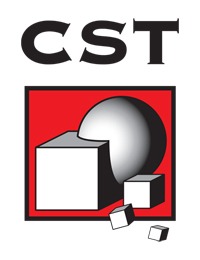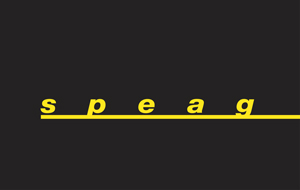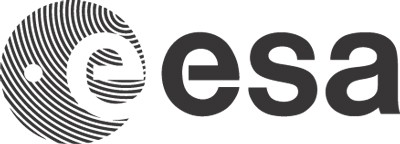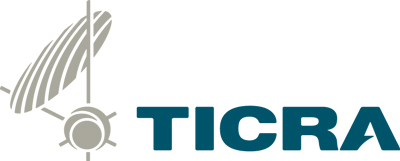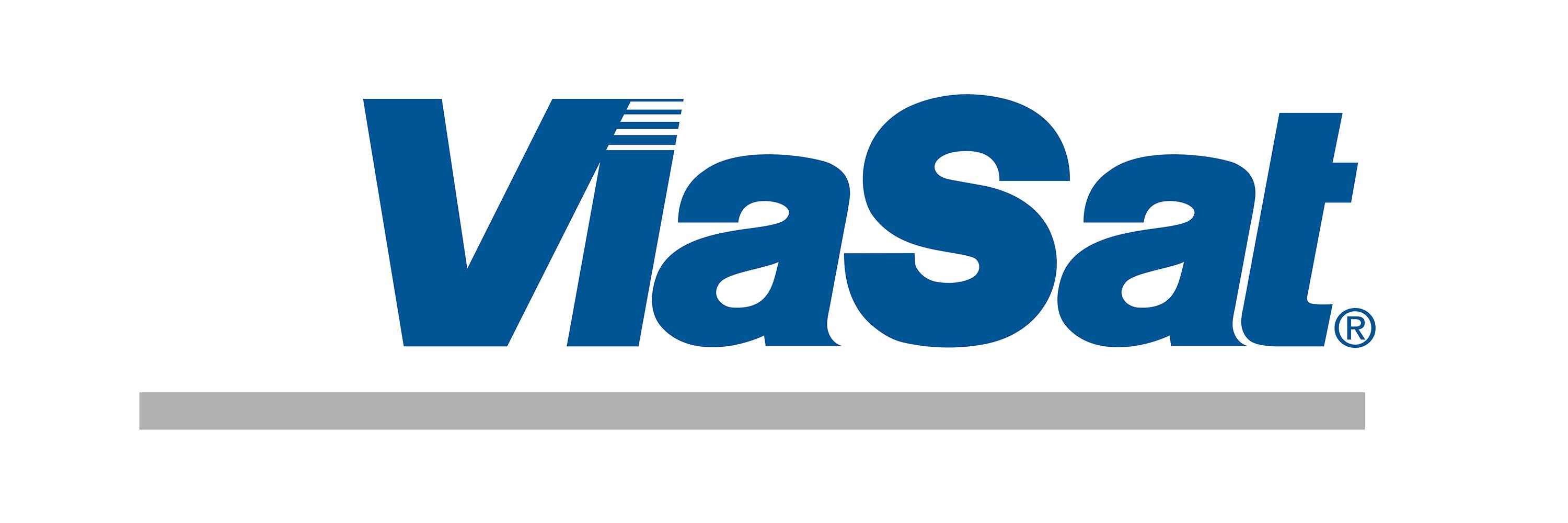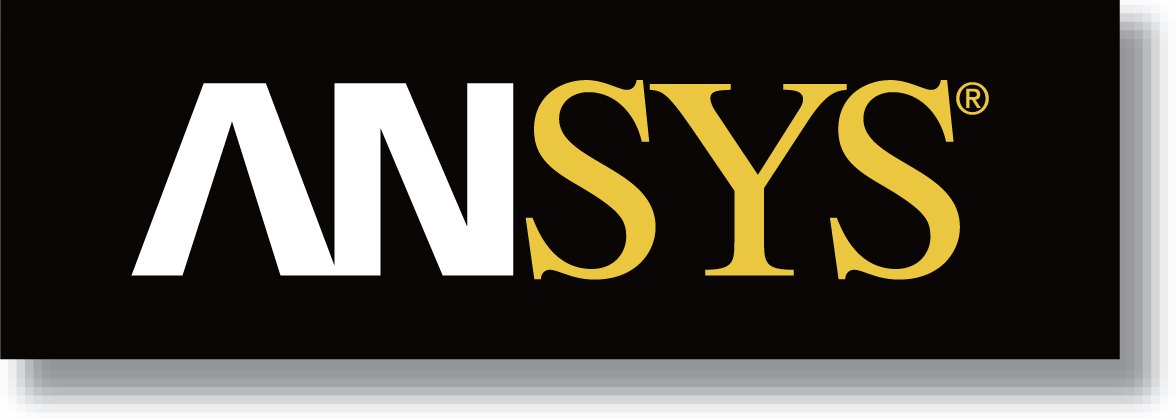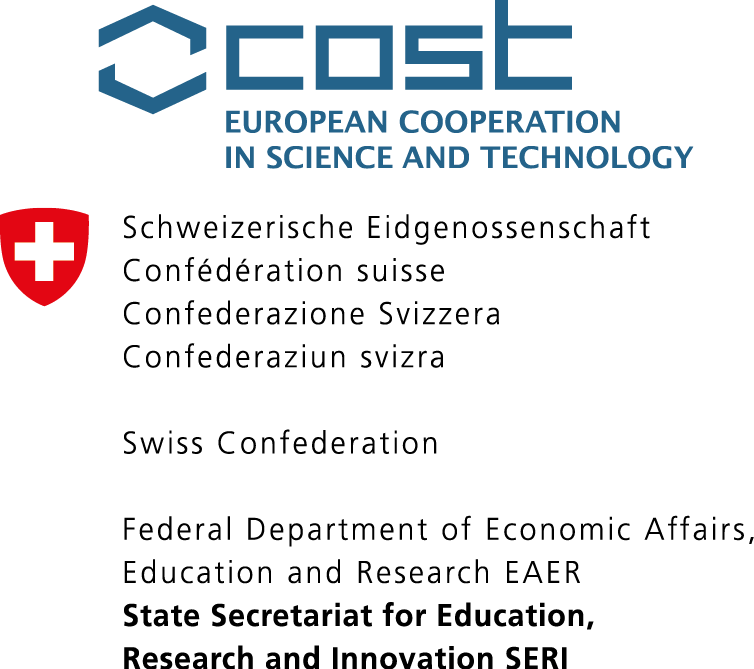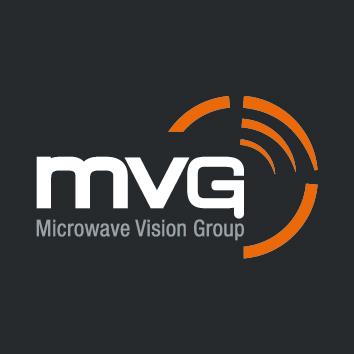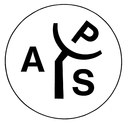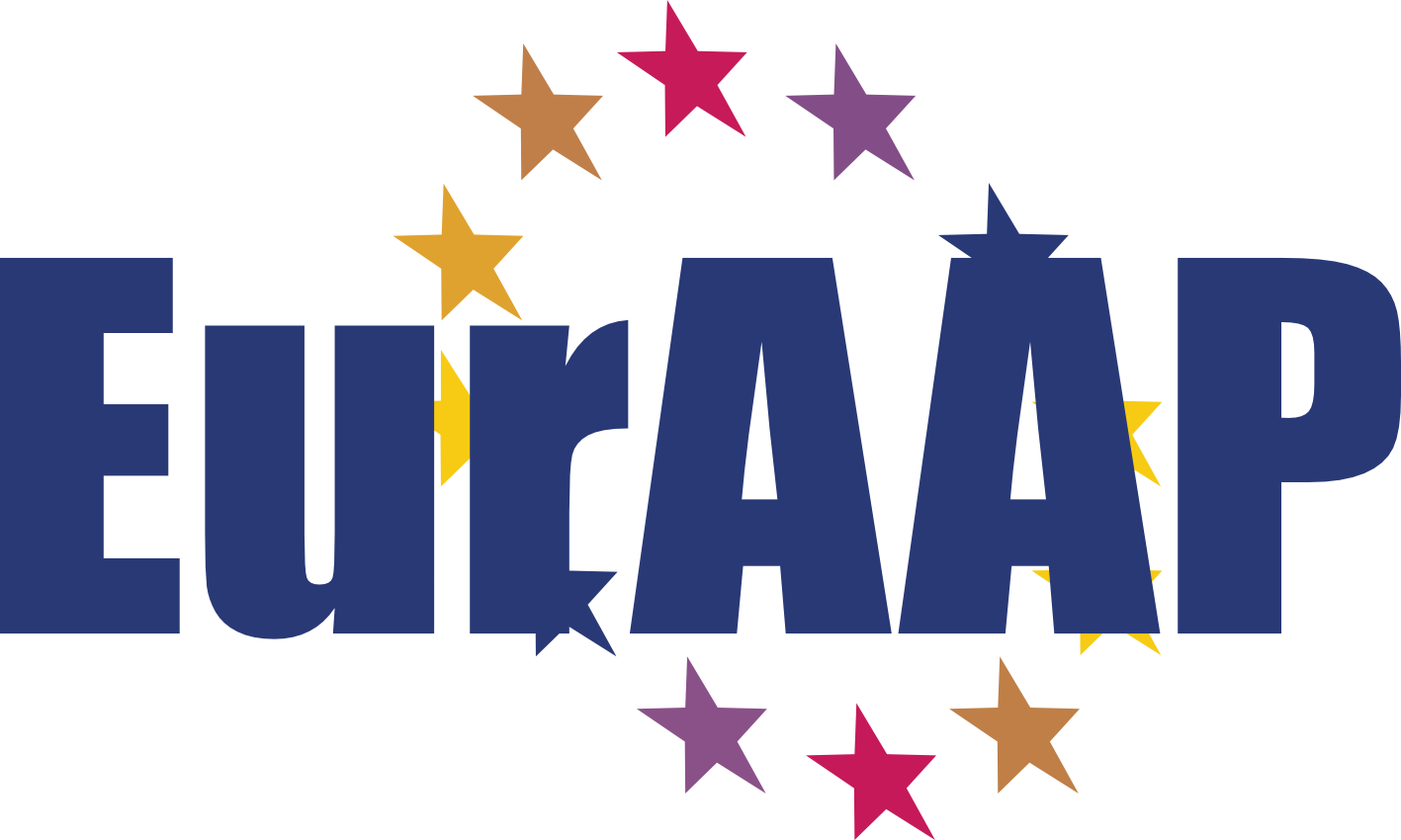Invited Speakers Biographies
Christophe Caloz
Polytechnique Montreal, Canada
Christophe Caloz received the Diplôme d'Ingénieur en Électricité and the Ph.D. degree from École Polytechnique Fédérale de Lausanne (EPFL), Switzerland, in 1995 and 2000, respectively.
From 2001 to 2004, he was a Postdoctoral Research Fellow at the Microwave Electronics Laboratory, University of California at Los Angeles (UCLA). In June 2004, Dr. Caloz joined École Polytechnique of Montréal, where he is now a Full Professor, the holder of a Canada Research Chair (CRC) Tier-I and the head of the Electromagnetics Research Group. He has authored and co-authored over 550 technical conference, letter and journal papers, 12 books and book chapters, and he holds several patents. His works have generated about 14,000 citations, and he is a Thomson Reuters Highly Cited Researcher. Dr. Caloz was a Member of the Microwave Theory and Techniques Society (MTT-S) Technical Committees MTT-15 (Microwave Field Theory) and MTT-25 (RF Nanotechnology), a Speaker of the MTT-15 Speaker Bureau, the Chair of the Commission D (Electronics and Photonics) of the Canadian Union de Radio Science Internationale (URSI) and an MTT-S representative at the IEEE Nanotechnology Council (NTC). In 2009, he co-founded the company ScisWave, which develops CRLH smart antenna solutions for WiFi.
Dr. Caloz received several awards, including the UCLA Chancellor’s Award for Post-doctoral Research in 2004, the MTT-S Outstanding Young Engineer Award in 2007, the E.W.R. Steacie Memorial Fellowship in 2013, the Prix Urgel-Archambault in 2013, and many best paper awards with his students at international conferences. He has been an IEEE Fellow since 2010 and an IEEE Distinguished Lecturer for the Antennas and Propagation Society (AP-S) since 2014. Since June 2015, he has been an Associate Editor of the Transactions on Antennas and Propagation of AP-S. In 2014, Dr. Caloz was elected as a member of the Administrative Committee of AP-S. He is currently also a Distinguished Adjunct Professor at King Abdulaziz University (KAU), Saudi Arabia. As a former member of URSI CNC, he is the General Chair of the XXII URSI General Assembly and Scientific Symposium (GASS), which will be held in Montréal August 18-29, 2017. His research interests include all fields of theoretical, computational and technological electromagnetics, with strong emphasis on emergent and multidisciplinary topics, including particularly metamaterials, nanoelectromagnetics, exotic antenna systems and real-time radio.
From 2001 to 2004, he was a Postdoctoral Research Fellow at the Microwave Electronics Laboratory, University of California at Los Angeles (UCLA). In June 2004, Dr. Caloz joined École Polytechnique of Montréal, where he is now a Full Professor, the holder of a Canada Research Chair (CRC) Tier-I and the head of the Electromagnetics Research Group. He has authored and co-authored over 550 technical conference, letter and journal papers, 12 books and book chapters, and he holds several patents. His works have generated about 14,000 citations, and he is a Thomson Reuters Highly Cited Researcher. Dr. Caloz was a Member of the Microwave Theory and Techniques Society (MTT-S) Technical Committees MTT-15 (Microwave Field Theory) and MTT-25 (RF Nanotechnology), a Speaker of the MTT-15 Speaker Bureau, the Chair of the Commission D (Electronics and Photonics) of the Canadian Union de Radio Science Internationale (URSI) and an MTT-S representative at the IEEE Nanotechnology Council (NTC). In 2009, he co-founded the company ScisWave, which develops CRLH smart antenna solutions for WiFi.
Dr. Caloz received several awards, including the UCLA Chancellor’s Award for Post-doctoral Research in 2004, the MTT-S Outstanding Young Engineer Award in 2007, the E.W.R. Steacie Memorial Fellowship in 2013, the Prix Urgel-Archambault in 2013, and many best paper awards with his students at international conferences. He has been an IEEE Fellow since 2010 and an IEEE Distinguished Lecturer for the Antennas and Propagation Society (AP-S) since 2014. Since June 2015, he has been an Associate Editor of the Transactions on Antennas and Propagation of AP-S. In 2014, Dr. Caloz was elected as a member of the Administrative Committee of AP-S. He is currently also a Distinguished Adjunct Professor at King Abdulaziz University (KAU), Saudi Arabia. As a former member of URSI CNC, he is the General Chair of the XXII URSI General Assembly and Scientific Symposium (GASS), which will be held in Montréal August 18-29, 2017. His research interests include all fields of theoretical, computational and technological electromagnetics, with strong emphasis on emergent and multidisciplinary topics, including particularly metamaterials, nanoelectromagnetics, exotic antenna systems and real-time radio.
Maximilian Göttl
KATHREIN-Werke KG, Rosenheim, Germany
Mr. Goettl leads the worldwide R&D team for the antenna division at Kathrein-Werke KG. In this role he is responsible for next generation innovations and technical business developments for the entire antenna product line.
Mr. Goettl joined Kathrein-Werke KG as development engineer after graduating from the University of Applied Sciences in Regensburg in 1986. He is author of numerous patents and innovations in the mobile communications industry.
Mr. Goettl joined Kathrein-Werke KG as development engineer after graduating from the University of Applied Sciences in Regensburg in 1986. He is author of numerous patents and innovations in the mobile communications industry.
Leslie Greengard
New York University, NY, USA
Leslie Greengard received his B.A. degree in Mathematics from Wesleyan University in 1979, and his Ph.D. degree in Computer Science and M.D. degree from Yale University in 1987. From 1987-1989 he was an NSF Postdoctoral Fellow at Yale University and at the Courant Institute of Mathematical Sciences, NYU, where he is a member of the faculty. He served as the Director of the Courant Institute from 2006-2011. Greengard is also Professor of Electrical and Computer Engineering at NYU’s Tandon School of Engineering and the Director of the Simons Center for Data Analysis at the Simons Foundation.
Greengard (together with V. Rokhlin) developed the Fast Multipole Method (FMM) for problems in gravitation, electrostatics and electromagnetics. Much of his work has been aimed at the development of high-order accurate integral equation based methods for partial differential equations in complex geometry. In 2000, the IEEE recognized the FMM as one of the top ten algorithms of the twentieth century. For their work, he and Rokhlin received the Steele Prize from the American Mathematical Society in 2001. Greengard was elected to both the National Academy of Sciences and the National Academy of Engineering in 2006
Greengard (together with V. Rokhlin) developed the Fast Multipole Method (FMM) for problems in gravitation, electrostatics and electromagnetics. Much of his work has been aimed at the development of high-order accurate integral equation based methods for partial differential equations in complex geometry. In 2000, the IEEE recognized the FMM as one of the top ten algorithms of the twentieth century. For their work, he and Rokhlin received the Steele Prize from the American Mathematical Society in 2001. Greengard was elected to both the National Academy of Sciences and the National Academy of Engineering in 2006
Susan Hagness
University of Wisconsin-Madison, WI, USA
Dr Susan Hagness received the B.S. degree with highest honors and the Ph.D. degree in electrical engineering from Northwestern University, Evanston, IL, USA, in 1993 and 1998, respectively.
Since 1998, she has been with the Department of Electrical and Computer Engineering, University of Wisconsin-Madison, Madison, WI, USA, where she is currently the Philip D. Reed Professor and serves as Associate Dean for Research and Graduate Affairs in the College of Engineering. She is also a faculty affiliate of the Department of Biomedical Engineering and a member of the UW Carbone Cancer Center. Her current bioelectromagnetics research interests include microwave breast imaging, microwave thermotherapy, nanoparticles as electromagnetic theranostic agents, and computational electromagnetics theory and applications in biology and medicine.
Dr Hagness served as an elected member of the IEEE Antennas and Propagation Society (AP-S) Administrative Committee from 2003 to 2005 and as an Associate Editor for the IEEE ANTENNAS AND WIRELESS PROPAGATION LETTERS from 2002 to 2007. She also served as the Chair of Commission K of the United States National Committee (USNC) of the International Union of Radio Science (URSI) from 2009 to 2011; the Technical Program Chair of the 2012 IEEE International Symposium on Antennas and Propagation and USNC/URSI National Radio Science Meeting; a Member (2009), the Vice-chair (2010–12), and the Chair (2013-14) of the IEEE AP-S Fellows Committee; and a Member of the IEEE AP-S Awards Committee (2011–13). She received the Presidential Early Career Award for Scientists and Engineers (PECASE) presented by the White House in 2000. In 2002, she was named one of the 100 top young innovators in science and engineering in the world by the MIT Technology Review magazine. She also received the UW-Madison Emil Steiger Distinguished Teaching Award (2003), the IEEE Engineering in Medicine and Biology Society Early Career Achievement Award (2004), the URSI Isaac Koga Gold Medal (2005), the IEEE Transactions on Biomedical Engineering Outstanding Paper Award (2007), the IEEE Education Society Mac E. Van Valkenburg Early Career Teaching Award (2007), the UW System Alliant Energy Underkofler Excellence in Teaching Award (2009), the Physics in Medicine and Biology Citations Prize (2011), the UW-Madison Kellett Mid-Career Award (2011), and the UW-Madison College of Engineering Benjamin Smith Reynolds Award for Excellence in Teaching Engineers (2014).
Kim Hassett
NSI - Nearfield Systems, Inc., USA
Kim Hassett has been involved with the antenna community for 30 years. During that time, her career has progressed from antenna design, analysis, modeling, testing, and currently providing antenna measurement solutions.
Kim received her BSEE from the University of Maryland in 1985, followed by graduate studies in Electromagnetics at The John Hopkins Whiting School of Engineering. After graduation, she worked for Westinghouse Electric Corporation (Northrop Grumman Electronic Systems) in Baltimore, Maryland and spent the early part of her career designing phased array antennas and later became involved with phased array analysis, simulation and modeling. This eventually led her to the antenna range where she worked for seven years specializing in phased array calibration and testing. She joined Hewlett-Packard/Agilent technologies in 1998 as a Support Engineer for antenna measurement systems, and later as a Technical Consultant for network analysis, spectrum analysis, satellite test systems, and wideband surveillance systems. However, it was her desire to return to the antenna test community that led her to join Nearfield Systems, Inc. in 2003.
She is currently employed by NSI, and provides sales and technical support for US customers from her home in Boulder, Colorado. Kim is a member of the Institute of Electrical and Electronics Engineers (IEEE), a Senior Member of the Antenna Measurement Techniques Association (AMTA), has served on the AMTA Board of Directors as Treasurer and President, and host for the AMTA 2015 Symposium.
She is currently employed by NSI, and provides sales and technical support for US customers from her home in Boulder, Colorado. Kim is a member of the Institute of Electrical and Electronics Engineers (IEEE), a Senior Member of the Antenna Measurement Techniques Association (AMTA), has served on the AMTA Board of Directors as Treasurer and President, and host for the AMTA 2015 Symposium.
Mona Jarrahi
University of California, Los Angeles, CA, USA
Mona Jarrahi received her B.S. degree in Electrical Engineering from Sharif University of Technology in 2000 and her M.S. and Ph.D. degrees in Electrical Engineering from Stanford University in 2003 and 2007.
She served as a Postdoctoral Scholar at University of California Berkeley from 2007 to 2008. After serving as an Assistant Professor at University of Michigan Ann Arbor, she joined University of California Los Angeles in 2013 as an Associate Professor of Electrical Engineering and the Director of the Terahertz Electronics Laboratory. Her research group focuses on Terahertz, Millimeter-Wave Electronics and Optoelectronics; Imaging and Spectroscopy Systems; and Microwave Photonics.
Prof. Jarrahi has made significant contributions to the development of ultrafast electronic and optoelectronic devices and integrated systems for terahertz and millimeter-wave sensing, imaging, computing, and communication systems by utilizing novel materials, nanostructures, and quantum well structures as well as innovative plasmonic and optical concepts. In recognition of her outstanding achievements, Prof. Jarrahi has received several prestigious awards in her career including the Presidential Early Career Award for Scientists and Engineers (PECASE); Early Career Award in Nanotechnology from the IEEE Nanotechnology Council; Outstanding Young Engineer Award from the IEEE Microwave Theory and Techniques Society; Booker Fellowship from the United States National Committee of the International Union of Radio Science (USNC/URSI); Lot Shafai Mid-Career Distinguished Achievement Award from the IEEE Antennas and Propagation Society; Grainger Foundation Frontiers of Engineering Award from National Academy of Engineering; Young Investigator Awards from the Army Research Office (ARO), the Office of Naval Research (ONR), and the Defense Advanced Research Projects Agency (DARPA); Early Career Award from the National Science Foundation (NSF); the Elizabeth C. Crosby Research Award from the University of Michigan; and best-paper awards at the International Microwave Symposium, International Symposium on Antennas and Propagation, and International Conference on Infrared, Millimeter, and Terahertz Waves. She has also been named a Kavli Fellow by the National Academy of Sciences.
Prof. Jarrahi is actively involved in several professional societies and has been on program committees of several conferences from IEEE, OSA, and SPIE societies. She is a senior member of IEEE, OSA, and SPIE societies and serves as a member of the Terahertz Technology and Applications Committee of IEEE Microwave Theory and Techniques, an editorial board member of Journal of Infrared, Millimeter and Terahertz Waves, a Distinguished Lecturer of IEEE Microwave Theory and Techniques Society, a Traveling Lecturer of OSA, and a Visiting Lecturer of SPIE. In addition, she serves as a panelist and reviewer for National Science Foundation (NSF), National Institute of Health (NIH), and Department of Energy (DOE).
She served as a Postdoctoral Scholar at University of California Berkeley from 2007 to 2008. After serving as an Assistant Professor at University of Michigan Ann Arbor, she joined University of California Los Angeles in 2013 as an Associate Professor of Electrical Engineering and the Director of the Terahertz Electronics Laboratory. Her research group focuses on Terahertz, Millimeter-Wave Electronics and Optoelectronics; Imaging and Spectroscopy Systems; and Microwave Photonics.
Prof. Jarrahi has made significant contributions to the development of ultrafast electronic and optoelectronic devices and integrated systems for terahertz and millimeter-wave sensing, imaging, computing, and communication systems by utilizing novel materials, nanostructures, and quantum well structures as well as innovative plasmonic and optical concepts. In recognition of her outstanding achievements, Prof. Jarrahi has received several prestigious awards in her career including the Presidential Early Career Award for Scientists and Engineers (PECASE); Early Career Award in Nanotechnology from the IEEE Nanotechnology Council; Outstanding Young Engineer Award from the IEEE Microwave Theory and Techniques Society; Booker Fellowship from the United States National Committee of the International Union of Radio Science (USNC/URSI); Lot Shafai Mid-Career Distinguished Achievement Award from the IEEE Antennas and Propagation Society; Grainger Foundation Frontiers of Engineering Award from National Academy of Engineering; Young Investigator Awards from the Army Research Office (ARO), the Office of Naval Research (ONR), and the Defense Advanced Research Projects Agency (DARPA); Early Career Award from the National Science Foundation (NSF); the Elizabeth C. Crosby Research Award from the University of Michigan; and best-paper awards at the International Microwave Symposium, International Symposium on Antennas and Propagation, and International Conference on Infrared, Millimeter, and Terahertz Waves. She has also been named a Kavli Fellow by the National Academy of Sciences.
Prof. Jarrahi is actively involved in several professional societies and has been on program committees of several conferences from IEEE, OSA, and SPIE societies. She is a senior member of IEEE, OSA, and SPIE societies and serves as a member of the Terahertz Technology and Applications Committee of IEEE Microwave Theory and Techniques, an editorial board member of Journal of Infrared, Millimeter and Terahertz Waves, a Distinguished Lecturer of IEEE Microwave Theory and Techniques Society, a Traveling Lecturer of OSA, and a Visiting Lecturer of SPIE. In addition, she serves as a panelist and reviewer for National Science Foundation (NSF), National Institute of Health (NIH), and Department of Energy (DOE).
Michael Jensen
Brigham Young University, UT, USA
Prof. Michael Jensen received the B.S. and M.S. degrees in Electrical Engineering from Brigham Young University in 1990 and 1991, respectively, and the Ph.D. in Electrical Engineering at the University of California, Los Angeles in 1994. Since 1994, he has been at the Electrical and Computer Engineering Department at BYU where he is currently a Professor and Department Chair. He teaches courses in electromagnetics, high-frequency circuit design, and signal processing for communications.
Dr. Jensen's research focuses on characterizing propagation channels and designing antennas for wireless communications as well as the development of advanced signal processing techniques for robust and secure communications. His publications in these areas include 3 book chapters, 67 journal articles, and over 170 conference articles. As a result of his work, he has been awarded the H. A. Wheeler paper award in the IEEE Transactions on Antennas and Propagation in 2002 and the best student paper award at the 1994 IEEE International Symposium on Antennas and Propagation. He was elevated to the grade of IEEE Fellow in 2008.
Dr. Jensen has been the Editor-in-Chief and an Associate Editor of the IEEE Transactions on Antennas and Propagation as well as an Associate Editor for the IEEE Antennas and Wireless Propagation Letters and the IEEE Antennas and Propagation Magazine. He has also served as member and chair of the Joint Meetings Committee for the IEEE Antennas and Propagation Society, a member of the Administrative Committee for this same society, and has been Vice-Chair or Technical Program Chair for seven different symposia. He is the co-founder of two companies that continue to do business in Utah County.
Dr. Jensen's research focuses on characterizing propagation channels and designing antennas for wireless communications as well as the development of advanced signal processing techniques for robust and secure communications. His publications in these areas include 3 book chapters, 67 journal articles, and over 170 conference articles. As a result of his work, he has been awarded the H. A. Wheeler paper award in the IEEE Transactions on Antennas and Propagation in 2002 and the best student paper award at the 1994 IEEE International Symposium on Antennas and Propagation. He was elevated to the grade of IEEE Fellow in 2008.
Dr. Jensen has been the Editor-in-Chief and an Associate Editor of the IEEE Transactions on Antennas and Propagation as well as an Associate Editor for the IEEE Antennas and Wireless Propagation Letters and the IEEE Antennas and Propagation Magazine. He has also served as member and chair of the Joint Meetings Committee for the IEEE Antennas and Propagation Society, a member of the Administrative Committee for this same society, and has been Vice-Chair or Technical Program Chair for seven different symposia. He is the co-founder of two companies that continue to do business in Utah County.
Nuria Llombart
Delft University of Technology, The Netherlands
Dr Nuria Llombart received the Electrical Engineering and Ph.D. degrees from the Polytechnic University of Valencia, Spain, in 2002 and 2006, respectively.
During her Master's degree studies she spent one year at the Friedrich-Alexander University of Erlangen-Nuremberg, Germany, and worked at the Fraunhofer Institute for Integrated Circuits, Erlangen, Germany. From 2002 until 2007, she was with the Antenna Group, TNO Defence, Security and Safety Institute, The Hague, The Netherlands, working as a Ph.D. student and afterwards as a Researcher. From 2007 until 2010, she was a Postdoctoral Fellow at the California Institute of Technology, working for the Sub millimeter Wave Advance Technology Group, Jet Propulsion Laboratory, Pasadena, USA. She was a Ramón y Cajal Fellow at the Optics Department of the Complutense University of Madrid, Spain, from 2010 to 2012. In September 2012, she joined the THz Sensing Group at the Technical University of Delft, The Netherlands, where she is currently an Associate Professor. She has coauthored over 100 journal and international conference contributions. Her research interests include the analysis and design of planar antennas, periodic structures, reflector antennas, lens antennas, and waveguide structures, with emphasis in the THz range.
Dr Llombart was co-recipient of the H.A. Wheeler Award for the Best Applications Paper of the year 2008 in the IEEE Transactions on Antennas and Propagation, the 2014 THz Science and Technology Best Paper Award of the IEEE Microwave Theory and Techniques Society and several NASA awards. She also received the 2014 IEEE Antenna and Propagation Society Lot Shafai Mid-Career Distinguished Achievement Award. She serves as Topical Editor for the IEEE Transactions on THz Science and Technology, IEEE Antennas and Propagation Wireless Letters, and for the Antenna Applications Corner of the IEEE Magazine on Antennas and Propagation. She is also a Board Member of the IRMMW-THz International Society.
During her Master's degree studies she spent one year at the Friedrich-Alexander University of Erlangen-Nuremberg, Germany, and worked at the Fraunhofer Institute for Integrated Circuits, Erlangen, Germany. From 2002 until 2007, she was with the Antenna Group, TNO Defence, Security and Safety Institute, The Hague, The Netherlands, working as a Ph.D. student and afterwards as a Researcher. From 2007 until 2010, she was a Postdoctoral Fellow at the California Institute of Technology, working for the Sub millimeter Wave Advance Technology Group, Jet Propulsion Laboratory, Pasadena, USA. She was a Ramón y Cajal Fellow at the Optics Department of the Complutense University of Madrid, Spain, from 2010 to 2012. In September 2012, she joined the THz Sensing Group at the Technical University of Delft, The Netherlands, where she is currently an Associate Professor. She has coauthored over 100 journal and international conference contributions. Her research interests include the analysis and design of planar antennas, periodic structures, reflector antennas, lens antennas, and waveguide structures, with emphasis in the THz range.
Dr Llombart was co-recipient of the H.A. Wheeler Award for the Best Applications Paper of the year 2008 in the IEEE Transactions on Antennas and Propagation, the 2014 THz Science and Technology Best Paper Award of the IEEE Microwave Theory and Techniques Society and several NASA awards. She also received the 2014 IEEE Antenna and Propagation Society Lot Shafai Mid-Career Distinguished Achievement Award. She serves as Topical Editor for the IEEE Transactions on THz Science and Technology, IEEE Antennas and Propagation Wireless Letters, and for the Antenna Applications Corner of the IEEE Magazine on Antennas and Propagation. She is also a Board Member of the IRMMW-THz International Society.
Andreas F. Molisch
University of Southern California, CA, USA
Andreas F. Molisch received the Dipl. Ing., Dr. techn., and habilitation degrees from the Technical University Vienna (Austria) in 1990, 1994, and 1999, respectively. From 1991 to 2000, he was with the TU Vienna, becoming an associate professor there in 1999. From 2000-2002, he was with the Wireless Systems Research Department at AT&T (Bell) Laboratories Research in Middletown, NJ, USA. From 2002-2008, he was with Mitsubishi Electric Research Labs, Cambridge, MA, USA, most recently as Distinguished Member of Technical Staff and Chief Wireless Standards Architect. Concurrently he was also Professor and Chairholder for radio systems at Lund University, Sweden. Since 2009, he is Professor of Electrical Engineering at the University of Southern California, Los Angeles, CA, USA, where he heads the Wireless Devices and Systems (WiDeS) group. Since 2012, he is also Director of the Communications Sciences Institute (CSI).
His current research interests are measurement and modeling of mobile radio channels, UWB localization and communication, cooperative communications, MIMO systems, and novel cellular archtectures. Dr. Molisch has authored, co-authored or edited 4 books (among them the textbook "Wireless Communications", Wiley-IEEE Press, 2nd ed.), 18 book chapters, some 180 journal papers, and numerous conference contributions, as well as more than 80 patents and 70 standards contributions.
Dr. Molisch has been Area Editor, Division Editor and Guest Editor of several journals. He has been General Chair, TPC Chair, or Track/Symposium Chair of numerous international conferences. He was chairman of a number of international standardization groups and technical committees of professional societies. He has received numerous awards, including the Donald Fink Award of the IEEE, and the Eric Sumner Award of the IEEE. Dr. Molisch is a Fellow of the IEEE, Fellow of the AAAS, Fellow of the IET, an IEEE Distinguished Lecturer, and Member of the Austrian Academy of Sciences.
His current research interests are measurement and modeling of mobile radio channels, UWB localization and communication, cooperative communications, MIMO systems, and novel cellular archtectures. Dr. Molisch has authored, co-authored or edited 4 books (among them the textbook "Wireless Communications", Wiley-IEEE Press, 2nd ed.), 18 book chapters, some 180 journal papers, and numerous conference contributions, as well as more than 80 patents and 70 standards contributions.
Dr. Molisch has been Area Editor, Division Editor and Guest Editor of several journals. He has been General Chair, TPC Chair, or Track/Symposium Chair of numerous international conferences. He was chairman of a number of international standardization groups and technical committees of professional societies. He has received numerous awards, including the Donald Fink Award of the IEEE, and the Eric Sumner Award of the IEEE. Dr. Molisch is a Fellow of the IEEE, Fellow of the AAAS, Fellow of the IET, an IEEE Distinguished Lecturer, and Member of the Austrian Academy of Sciences.
Claude Oestges
University Catholique de Louvain, Belgium
Claude Oestges received the M.Sc. and Ph.D. degrees in Electrical Engineering from the Université catholique de Louvain (UCL), Louvain-la-Neuve, Belgium, respectively in 1996 and 2000.
In January 2001, he joined as a post-doctoral scholar the Smart Antennas Research Group (Information Systems Laboratory), Stanford University, CA, USA. From January 2002 to September 2005, he was associated with the Microwave Laboratory UCL as a post-doctoral fellow of the Belgian Fonds de la Recherche Scientifique (FRS-FNRS). Claude Oestges is presently Professor with the Electrical Engineering Department, Institute for Information and Communication Technologies, Electronics and Applied Mathematics, UCL. He also currently serves as an Associate Editor for the IEEE Transactions on Antennas and Propagation and the IEEE Transactions on Vehicular Technology.
He is the author or co-author of three books and more than 180 journal papers and conference communications, and was the recipient of the 1999-2000 IET Marconi Premium Award and of the IEEE Vehicular Technology Society Neal Shepherd Award in 2004 and 2012.
In January 2001, he joined as a post-doctoral scholar the Smart Antennas Research Group (Information Systems Laboratory), Stanford University, CA, USA. From January 2002 to September 2005, he was associated with the Microwave Laboratory UCL as a post-doctoral fellow of the Belgian Fonds de la Recherche Scientifique (FRS-FNRS). Claude Oestges is presently Professor with the Electrical Engineering Department, Institute for Information and Communication Technologies, Electronics and Applied Mathematics, UCL. He also currently serves as an Associate Editor for the IEEE Transactions on Antennas and Propagation and the IEEE Transactions on Vehicular Technology.
He is the author or co-author of three books and more than 180 journal papers and conference communications, and was the recipient of the 1999-2000 IET Marconi Premium Award and of the IEEE Vehicular Technology Society Neal Shepherd Award in 2004 and 2012.
Zoya Popovic
University of Colorado Boulder, CO, USA
Zoya Popović received the Dipl.Ing. degree from the University of Belgrade,
Serbia, Yugoslavia, in 1985, and the Ph.D. degree from the California Institute of Technology,
Pasadena, CA, USA, in 1990.
Since 1990, she has been with the University of Colorado, Boulder, CO, USA, where she is currently a Distinguished Professor and holds the Hudson Moore Jr. Chair with the Department of Electrical, Computer and Energy Engineering. In 2001, she was a Visiting Professor with the Technical University of Munich, Munich, Germany. Since 1991, she has graduated 50 Ph.D. students.
Her research interests include high-efficiency, low-noise, and broadband microwave and millimeter-wave circuits, active antennas, quasi-optical millimeter-wave techniques, applications of microwaves in medicine, intelligent RF front ends, and wireless powering for batteryless sensors.
Prof. Popović was the recipient of the 1993 and 2006 Microwave Prizes presented by the IEEE Microwave Theory and Techniques Society (IEEE MTT-S) for the best journal papers. She received the 1996 URSI Issac Koga GoldMedal and was named a National Science Foundation White House Presidential Faculty Fellow in 1993. She was the recipient of a 2000 Humboldt Research Award for Senior U.S. Scientists from the German Alexander von Humboldt Stiftung. She was elected a Foreign Member of the Serbian Academy of Sciences and Arts in 2006. She was also the recipient of the 2001 Hewlett-Packard (HP)/American Society for Engineering Education (ASEE) Terman Medal for combined teaching and research excellence. She received the IEEE-MTT Distinguished Educator award in 2013 and has been an IEEE Fellow since 2002.
Since 1990, she has been with the University of Colorado, Boulder, CO, USA, where she is currently a Distinguished Professor and holds the Hudson Moore Jr. Chair with the Department of Electrical, Computer and Energy Engineering. In 2001, she was a Visiting Professor with the Technical University of Munich, Munich, Germany. Since 1991, she has graduated 50 Ph.D. students.
Her research interests include high-efficiency, low-noise, and broadband microwave and millimeter-wave circuits, active antennas, quasi-optical millimeter-wave techniques, applications of microwaves in medicine, intelligent RF front ends, and wireless powering for batteryless sensors.
Prof. Popović was the recipient of the 1993 and 2006 Microwave Prizes presented by the IEEE Microwave Theory and Techniques Society (IEEE MTT-S) for the best journal papers. She received the 1996 URSI Issac Koga GoldMedal and was named a National Science Foundation White House Presidential Faculty Fellow in 1993. She was the recipient of a 2000 Humboldt Research Award for Senior U.S. Scientists from the German Alexander von Humboldt Stiftung. She was elected a Foreign Member of the Serbian Academy of Sciences and Arts in 2006. She was also the recipient of the 2001 Hewlett-Packard (HP)/American Society for Engineering Education (ASEE) Terman Medal for combined teaching and research excellence. She received the IEEE-MTT Distinguished Educator award in 2013 and has been an IEEE Fellow since 2002.
Naoki Shinohara
Kyoto University, Japan
Naoki Shinohara received the B.E. degree in electronic engineering, the M.E. and Ph.D. (Eng.) degrees in electrical engineering from Kyoto University, Japan, in 1991, 1993 and 1996, respectively. He joined Kyoto University's Radio Atmospheric Science Center (later became Radio Science Center for Space and Atmosphere in 2000 and Research Institute for Sustainable Humanosphere in 2004 due to reorganizations) as a Research Associate in 1998. He became an Associate Professor in 2001, and has been a Professor in the Institute since 2010. Dr. Shinohara has been engaging in research on Solar Power Station/Satellite and Microwave Power Transmission systems for more than 20 years and is very active in several committees. He is a member of IEEE MTT-S Technical Committee MTT-26 (Wireless Energy Transfer and Conversion), TPC member of IEEE MTT-S Kansai Chapter, advisory committee member of IEEE Wireless Power Transfer Conference, executive editor of international journal of Wireless Power Transfer (Cambridge Press), member of Japanese committee C of Radio Science for URSI, chair of technical committee on Wireless Power Transfer, communications society, IEICE, chair of Wireless Power Transfer Consortium for Practical Applications (WiPoT), and chair of Wireless Power Management Consortium (WPMc)
Hans-Jürgen Steiner
Airbus DS, Munich, Germany
Hans-Jürgen Steiner was born in Wolfenbüttel, Germany, in 1950. He received his first Dipl. Ing. degree in electrical engineering from the University of Applied Sciences in Cologne, in 1973. The second engineering degree in radio wave physics was acquired from the University of Munich, in 1978, Germany.
From 1978 to 1982 he worked at the German Space Center as an Antenna Scientist in developing radiometric sensors for aircrafts at 35/90 GHz. Since 1983 he has been working in the well-known German Space Industry MBB, Daimler Chrysler Aerospace, EADS and now Airbus. He started as a team leader for space antenna design and took over 1987 the position as head of test facilities for antennas, optical instruments and environmental condition. Since 2003 he is heading the engineering department for antenna measurement technology. The focus of his work was the design and technological development of double reflector compact ranges with extreme high cross-polar purity for telecommunication satellites. His work is documented in more than 50 international publications and 10 patents.
From 1978 to 1982 he worked at the German Space Center as an Antenna Scientist in developing radiometric sensors for aircrafts at 35/90 GHz. Since 1983 he has been working in the well-known German Space Industry MBB, Daimler Chrysler Aerospace, EADS and now Airbus. He started as a team leader for space antenna design and took over 1987 the position as head of test facilities for antennas, optical instruments and environmental condition. Since 2003 he is heading the engineering department for antenna measurement technology. The focus of his work was the design and technological development of double reflector compact ranges with extreme high cross-polar purity for telecommunication satellites. His work is documented in more than 50 international publications and 10 patents.
Wen Tong
Huawei Fellow and Huawei Wireless CTO
Dr. Wen Tong is the Huawei Fellow and IEEE Fellow; the Head of Wireless Research, and the Head of Communications Technologies Laboratories, Huawei 2012 LAB
Prior to joining Huawei in March 2009, Dr. Wen Tong was the Nortel Fellow and global Head of the Network Technology Labs at Nortel. He received the M.Sc. and Ph.D degrees in Electrical Engineering in 1986 and 1993 and joined the Wireless Technology Labs at Bell Northern Research in 1995 in Canada. He has pioneered fundamental technologies in wireless with 280 granted US patents. Dr. Tong was Nortel's Most Prolific Inventor.
Dr. Tong has conducted the advanced research work spanning from 1G to 4G wireless at Nortel. He had been the director of Wireless Technology Labs from 2005 to 2007. From 2007 to 2009, Dr. Tong was the head of Network Technology Labs, responsible for Nortel's global strategic technologies research and development. In 2007, Dr. Tong was inducted as first batch of Nortel Fellow.
Since 2010, Dr. Tong is the vice president, CTO of Huawei Wireless and head of Huawei Wireless Research leading one of the largest wireless research organizations in the industry with more than 700 research experts. In 2011, Dr. Tong was elected as first batch of Huawei Fellow, and Dr. Tong was appointed the Head of Communications Technologies Labs of Huawei 2012 LAB, a corporative centralized next generation research initiative and he spearhead to lead Huawei's 5G wireless research and development.
In 2014, he was the recipient of IEEE Communications Society's Industry Innovation Award for "the leadership and contributions in development of 3G and 4G wireless systems". Dr. Tong serves as Board of Director of WiFi Alliance and he is a Fellow of Canadian Academy of Engineering.
Prior to joining Huawei in March 2009, Dr. Wen Tong was the Nortel Fellow and global Head of the Network Technology Labs at Nortel. He received the M.Sc. and Ph.D degrees in Electrical Engineering in 1986 and 1993 and joined the Wireless Technology Labs at Bell Northern Research in 1995 in Canada. He has pioneered fundamental technologies in wireless with 280 granted US patents. Dr. Tong was Nortel's Most Prolific Inventor.
Dr. Tong has conducted the advanced research work spanning from 1G to 4G wireless at Nortel. He had been the director of Wireless Technology Labs from 2005 to 2007. From 2007 to 2009, Dr. Tong was the head of Network Technology Labs, responsible for Nortel's global strategic technologies research and development. In 2007, Dr. Tong was inducted as first batch of Nortel Fellow.
Since 2010, Dr. Tong is the vice president, CTO of Huawei Wireless and head of Huawei Wireless Research leading one of the largest wireless research organizations in the industry with more than 700 research experts. In 2011, Dr. Tong was elected as first batch of Huawei Fellow, and Dr. Tong was appointed the Head of Communications Technologies Labs of Huawei 2012 LAB, a corporative centralized next generation research initiative and he spearhead to lead Huawei's 5G wireless research and development.
In 2014, he was the recipient of IEEE Communications Society's Industry Innovation Award for "the leadership and contributions in development of 3G and 4G wireless systems". Dr. Tong serves as Board of Director of WiFi Alliance and he is a Fellow of Canadian Academy of Engineering.
Yuan-Ting Zhang
Chinese University of Hong Kong, Hong Kong SAR, The People's Republic of China
Dr. Yuan-Ting Zhang is the Director of Joint Research Center for Biomedical Engineering, Founding Head of the Division of Biomedical Engineering, and Professor of Department of Electronic Engineering at the Chinese University of Hong Kong. Dr. Zhang serves concurrently the Director of the Key Lab for Health Informatics of the Chinese Academy of Sciences (HICAS).
His research spans several fields including wearable medical devices, body sensor networks, bio-THz technologies, bio-modeling, neural engineering, cardiovascular health informatics, and e-p-m-Heath and telemedicine technologies, and is closely tied up to his teaching and publishing activities. He has authored/co-authored over 400 scientific publications and 11 book chapters, and filed 31 patents. His research work has won him a number of Awards including the best journal paper awards from IEEE-EMBS and the Asia Pacific ICTA e-Health Award.
Dr. Zhang provided extensively professional services of significant value to the local industries and global academic communities. He served as Associate Editor of IEEE Transactions on Biomedical Engineering, founding Associate Editor of IEEE Transactions on Mobile Computing, Guest Editor for IEEE Transactions on Information Technology in Biomedicine, and Guest Editor for IEEE Communication Magazine. He was previously the Vice-President of the IEEE-EMBS. He served as the Technical Program Chair and the General Conference Chair of the 20th and 27th IEEE-EMBS Annual International Conferences in 1998 and 2005, respectively. He was a member of IEEE Fellow Elevation Committee and the Award Committee for IEEE Medal on Innovations in Healthcare Technology.
Dr. Zhang serves currently on IAMBE Fellow Membership Committee, IEEE-EMBS Standard Committee, HK-ITC Projects Assessment Panel, and Dr. Zhang also serves Editorial Board Member for the Book Series of Biomedical Engineering published by IEEE Press and Willey, Chair of working group for developing IEEE standard on wearable cuffless blood pressure measuring devices, and Editor-in-Chief of IEEE Transactions on Information Technology in Biomedicine (which will be renamed as IEEE Journal of Biomedical and Health Informatics (J-BHI) starting from Jan. 2013). Dr. Zhang holds the fellowships from the International Academy of Medical and Biological Engineering (IAMBE), Institute of Electrical and Electronics Engineers (IEEE), and the American Institute of Medical and Biological Engineering (AIMBE) in recognition of his outstanding contributions to the development of wearable medical devices and mobile health technologies.
His research spans several fields including wearable medical devices, body sensor networks, bio-THz technologies, bio-modeling, neural engineering, cardiovascular health informatics, and e-p-m-Heath and telemedicine technologies, and is closely tied up to his teaching and publishing activities. He has authored/co-authored over 400 scientific publications and 11 book chapters, and filed 31 patents. His research work has won him a number of Awards including the best journal paper awards from IEEE-EMBS and the Asia Pacific ICTA e-Health Award.
Dr. Zhang provided extensively professional services of significant value to the local industries and global academic communities. He served as Associate Editor of IEEE Transactions on Biomedical Engineering, founding Associate Editor of IEEE Transactions on Mobile Computing, Guest Editor for IEEE Transactions on Information Technology in Biomedicine, and Guest Editor for IEEE Communication Magazine. He was previously the Vice-President of the IEEE-EMBS. He served as the Technical Program Chair and the General Conference Chair of the 20th and 27th IEEE-EMBS Annual International Conferences in 1998 and 2005, respectively. He was a member of IEEE Fellow Elevation Committee and the Award Committee for IEEE Medal on Innovations in Healthcare Technology.
Dr. Zhang serves currently on IAMBE Fellow Membership Committee, IEEE-EMBS Standard Committee, HK-ITC Projects Assessment Panel, and Dr. Zhang also serves Editorial Board Member for the Book Series of Biomedical Engineering published by IEEE Press and Willey, Chair of working group for developing IEEE standard on wearable cuffless blood pressure measuring devices, and Editor-in-Chief of IEEE Transactions on Information Technology in Biomedicine (which will be renamed as IEEE Journal of Biomedical and Health Informatics (J-BHI) starting from Jan. 2013). Dr. Zhang holds the fellowships from the International Academy of Medical and Biological Engineering (IAMBE), Institute of Electrical and Electronics Engineers (IEEE), and the American Institute of Medical and Biological Engineering (AIMBE) in recognition of his outstanding contributions to the development of wearable medical devices and mobile health technologies.
